Journal Description
Sensors
Sensors
is an international, peer-reviewed, open access journal on the science and technology of sensors. Sensors is published semimonthly online by MDPI. The Polish Society of Applied Electromagnetics (PTZE), Japan Society of Photogrammetry and Remote Sensing (JSPRS), Spanish Society of Biomedical Engineering (SEIB), International Society for the Measurement of Physical Behaviour (ISMPB) and Chinese Society of Micro-Nano Technology (CSMNT) and more are affiliated with Sensors and their members receive a discount on the article processing charges.
- Open Access — free for readers, with article processing charges (APC) paid by authors or their institutions.
- High Visibility: indexed within Scopus, SCIE (Web of Science), PubMed, MEDLINE, PMC, Ei Compendex, Inspec, Astrophysics Data System, and other databases.
- Journal Rank: JCR - Q2 (Chemistry, Analytical) / CiteScore - Q1 (Instrumentation)
- Rapid Publication: manuscripts are peer-reviewed and a first decision is provided to authors approximately 18.6 days after submission; acceptance to publication is undertaken in 2.4 days (median values for papers published in this journal in the second half of 2024).
- Recognition of Reviewers: reviewers who provide timely, thorough peer-review reports receive vouchers entitling them to a discount on the APC of their next publication in any MDPI journal, in appreciation of the work done.
- Testimonials: See what our editors and authors say about Sensors.
- Companion journals for Sensors include: Chips, JCP and Targets.
Impact Factor:
3.4 (2023);
5-Year Impact Factor:
3.7 (2023)
Latest Articles
Automated Quality Control of Cleaning Processes in Automotive Components Using Blob Analysis
Sensors 2025, 25(9), 2710; https://doi.org/10.3390/s25092710 - 24 Apr 2025
Abstract
This study presents an automated computer vision system for assessing the cleanliness of plastic mirror caps used in the automotive industry after a washing process. These components are highly visible and require optimal surface conditions prior to painting, making the detection of residual
[...] Read more.
This study presents an automated computer vision system for assessing the cleanliness of plastic mirror caps used in the automotive industry after a washing process. These components are highly visible and require optimal surface conditions prior to painting, making the detection of residual contaminants critical for quality assurance. The system acquires high-resolution monochrome images under various lighting configurations, including natural light and infrared (IR) at 850 nm and 940 nm, with different angles of incidence. Four blob detection algorithms—adaptive thresholding, Laplacian of Gaussian (LoG), Difference of Gaussians (DoG), and Determinant of Hessian (DoH)—were implemented and evaluated based on their ability to detect surface impurities. Performance was assessed by comparing the total detected blob area before and after the cleaning process, providing a proxy for both sensitivity and false positive rate. Among the tested methods, adaptive thresholding under 30° natural light produced the best results, with a statistically significant z-score of +2.05 in the pre-wash phase and reduced false detections in post-wash conditions. The LoG and DoG methods were more prone to spurious detections, while DoH demonstrated intermediate performance but struggled with reflective surfaces. The proposed approach offers a cost-effective and scalable solution for real-time quality control in industrial environments, with the potential to improve process reliability and reduce waste due to surface defects.
Full article
(This article belongs to the Special Issue Intelligent Industrial Process Control Systems: 2nd Edition)
Open AccessArticle
A Robust Multivariate Time Series Classification Approach Based on Topological Data Analysis for Channel Fault Tolerance
by
Seong-Yeon Jeung and Jang-Woo Kwon
Sensors 2025, 25(9), 2709; https://doi.org/10.3390/s25092709 - 24 Apr 2025
Abstract
In this study, we propose a robust artificial intelligence (AI) model for vibration monitoring of rotating equipment to support reliable operation across various industries, including manufacturing, power plants, and aerospace. The reliability and completeness of sensor data are essential for early detection of
[...] Read more.
In this study, we propose a robust artificial intelligence (AI) model for vibration monitoring of rotating equipment to support reliable operation across various industries, including manufacturing, power plants, and aerospace. The reliability and completeness of sensor data are essential for early detection of anomalies in equipment and for performing predictive maintenance. While AI-based predictive maintenance and condition-monitoring technologies have advanced in recent years, the issue of data loss caused by sensor failures remains a significant challenge that leads to performance degradation of AI models. In particular, for equipment utilizing multiple sensors, the complete loss of data from a single sensor significantly diminishes the predictive maintenance capability of AI models, thereby reducing their reliability. To address this issue, this study introduces topological data analysis (TDA) to develop a robust AI model. TDA analyzes the topological structure of sensor data to generate consistent feature vectors that capture the intrinsic characteristics of the data. This enables stable predictions even when certain channels of multi-sensor data are entirely missing. The proposed method demonstrates high performance resilience under conditions of partial sensor data loss, thereby contributing to enhanced reliability of AI-based predictive maintenance systems and the establishment of efficient maintenance strategies in the future.
Full article
(This article belongs to the Section Fault Diagnosis & Sensors)
Open AccessArticle
MFBCE: A Multi-Focal Bionic Compound Eye for Distance Measurement
by
Qiwei Liu, Xia Wang, Jiaan Xue, Shuaijun Lv and Ranfeng Wei
Sensors 2025, 25(9), 2708; https://doi.org/10.3390/s25092708 - 24 Apr 2025
Abstract
In response to the demand for small-size, high-precision, and real-time target distance measurement in platforms such as autonomous vehicles and drones, this paper investigates the multi-focal bionic compound eye (MFBCE) and its associated distance measurement algorithm. MFBCE was designed to integrate multiple lenses
[...] Read more.
In response to the demand for small-size, high-precision, and real-time target distance measurement in platforms such as autonomous vehicles and drones, this paper investigates the multi-focal bionic compound eye (MFBCE) and its associated distance measurement algorithm. MFBCE was designed to integrate multiple lenses with different focal lengths and a CMOS array. Based on this system, a multi-eye distance measurement algorithm based on target detection was proposed. The algorithm derives the application of binocular distance measurement on cameras with different focal lengths, overcoming the limitation of traditional binocular algorithms that only work with identical cameras. By utilizing the multi-scale information obtained from multiple lenses with different focal lengths, the ranging accuracy of the MFBCE is improved. The telephoto lenses, with their narrow field of view, are beneficial for capturing detailed target information, while wide-angle lenses, with their larger field of view, are useful for acquiring information about the target’s environment. Experiments using the least squares method for ranging targets at 100 cm yielded a mean absolute error (MAE) of 1.05, approximately one-half of the binocular distance measurement algorithm. The proposed MFBCE demonstrates significant potential for applications in near-range obstacle avoidance, robotic grasping, and assisted driving.
Full article
(This article belongs to the Section Biosensors)
►▼
Show Figures
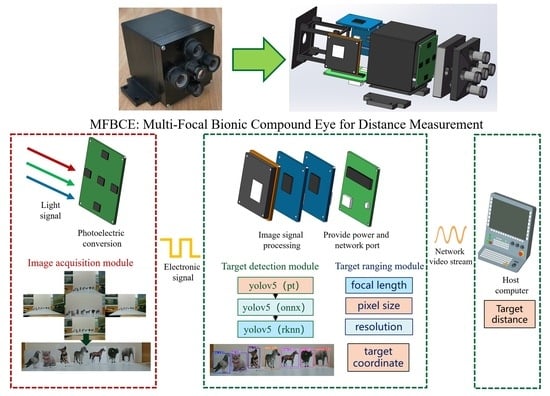
Graphical abstract
Open AccessArticle
The Aboveground Biomass Estimation of the Grain for Green Program Stands Using UAV-LiDAR and Sentinel-2 Data
by
Gaoke Yueliang, Gentana Ge, Xiaosong Li, Cuicui Ji, Tiancan Wang, Tong Shen, Yubo Zhi, Chaochao Chen and Licheng Zhao
Sensors 2025, 25(9), 2707; https://doi.org/10.3390/s25092707 - 24 Apr 2025
Abstract
Aboveground biomass (AGB) serves as a crucial indicator of the effectiveness of the Grain for Green Program (GGP), and its accurate estimation is essential for evaluating forest health and carbon sink capacity. However, due to the dominance of sparse forests in GGP stands,
[...] Read more.
Aboveground biomass (AGB) serves as a crucial indicator of the effectiveness of the Grain for Green Program (GGP), and its accurate estimation is essential for evaluating forest health and carbon sink capacity. However, due to the dominance of sparse forests in GGP stands, research in this area remains significantly limited. In this study, we developed the optimal tree height-diameter at breast height (DBH) growth models for major tree species and constructed a high-quality AGB sample dataset by integrating airborne LiDAR data and tree species information. Then, the AGB of the GGP stands was estimated using the Sentinel-2 data and the gradient boosting decision tree (GBDT) algorithm. The results showed that the AGB sample dataset constructed using the proposed approach exhibited strong consistency with field-measured data (R2 = 0.89). The GBDT-based AGB estimation model shows high accuracy, with an R2 of 0.96 and a root mean square error (RMSE) of 560 g/m2. Key variables such as tasseled cap greenness (TCG), visible-band difference vegetation index (VDVI), red-edge normalized difference vegetation index (RENDVI), and visible-band difference vegetation index (VDVI) were identified as highly important. This highlights that vegetation indices and tasseled cap transformation index information are key factors in estimating AGB. The AGB of major tree species in the new round of the GGP stands in Inner Mongolia ranged from 120 to 9253 g/m2, with mean values of 978 g/m2 for poplar, 622 g/m2 for Mongolian Scots pine, and 313 g/m2 for Chinese red pine species. This study offers a practical method for AGB estimation in GGP stands, contributing significantly to sustainable forest management and ecological conservation efforts.
Full article
(This article belongs to the Special Issue Application of LiDAR Remote Sensing and Mapping)
Open AccessArticle
Optimization of OPM-MEG Layouts with a Limited Number of Sensors
by
Urban Marhl, Rok Hren, Tilmann Sander and Vojko Jazbinšek
Sensors 2025, 25(9), 2706; https://doi.org/10.3390/s25092706 - 24 Apr 2025
Abstract
Magnetoencephalography (MEG) is a non-invasive neuroimaging technique that measures weak magnetic fields generated by neural electrical activity in the brain. Traditional MEG systems use superconducting quantum interference device (SQUID) sensors, which require cryogenic cooling and employ a dense array of sensors to capture
[...] Read more.
Magnetoencephalography (MEG) is a non-invasive neuroimaging technique that measures weak magnetic fields generated by neural electrical activity in the brain. Traditional MEG systems use superconducting quantum interference device (SQUID) sensors, which require cryogenic cooling and employ a dense array of sensors to capture magnetic field maps (MFMs) around the head. Recent advancements have introduced optically pumped magnetometers (OPMs) as a promising alternative. Unlike SQUIDs, OPMs do not require cooling and can be placed closer to regions of interest (ROIs). This study aims to optimize the layout of OPM-MEG sensors, maximizing information capture with a limited number of sensors. We applied a sequential selection algorithm (SSA), originally developed for body surface potential mapping in electrocardiography, which requires a large database of full-head MFMs. While modern OPM-MEG systems offer full-head coverage, expected future clinical use will benefit from simplified procedures, where handling a lower number of sensors is easier and more efficient. To explore this, we converted full-head SQUID-MEG measurements of auditory-evoked fields (AEFs) into OPM-MEG layouts with 80 sensor sites. System conversion was done by calculating a current distribution on the brain surface using minimum norm estimation (MNE). We evaluated the SSA’s performance under different protocols, for example, using measurements of single or combined OPM components. We assessed the quality of estimated MFMs using metrics, such as the correlation coefficient (CC), root-mean-square error, and relative error. Additionally, we performed source localization for the highest auditory response (M100) by fitting equivalent current dipoles. Our results show that the first 15 to 20 optimally selected sensors (CC > 0.95, localization error < 1 mm) capture most of the information contained in full-head MFMs. Our main finding is that for event-related fields, such as AEFs, which primarily originate from focal sources, a significantly smaller number of sensors than currently used in conventional MEG systems is sufficient to extract relevant information.
Full article
(This article belongs to the Collection Medical Applications of Sensor Systems and Devices)
►▼
Show Figures
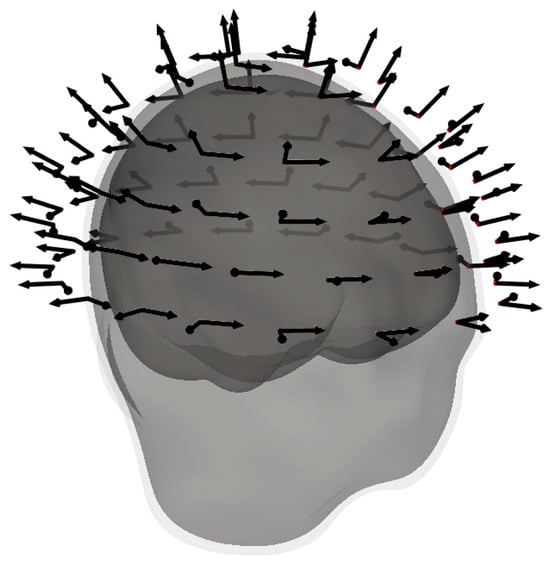
Figure 1
Open AccessArticle
Fabrication of ZnO Thin Films Doped with Na at Different Percentages for Sensing CO2 in Small Quantities at Room Temperature
by
Marina Stramarkou, Achilleas Bardakas, Magdalini Krokida and Christos Tsamis
Sensors 2025, 25(9), 2705; https://doi.org/10.3390/s25092705 - 24 Apr 2025
Abstract
The objective of this study is the fabrication of sensors which can detect modifications in CO2 concentrations at room temperature, thus indicating the quality or microbial spoilage of food products when incorporated into food packaging. ZnO nanostructures are known for their ability
[...] Read more.
The objective of this study is the fabrication of sensors which can detect modifications in CO2 concentrations at room temperature, thus indicating the quality or microbial spoilage of food products when incorporated into food packaging. ZnO nanostructures are known for their ability to detect organic gases; however, their effectiveness is limited to high temperatures (greater than 200 °C). To overcome this limitation, sodium (Na) doping is investigated as a way to enhance the sensing properties of ZnO films and lower the working temperature. In this study, undoped and Na-doped ZnO thin films were developed via the sol-gel method with different Na percentages (2.5, 5 and 7.5%) and were deposited via spin coating. The crystal structure, the morphology, and the surface topography of the developed films were characterized by X-ray Diffraction (XRD), Scanning Electron Microscopy (SEM), and Atomic Force Microscopy (AFM), respectively. Furthermore, the response to CO2 was measured by varying its concentration up to 500 ppm at room temperature. All the developed films presented the characteristic diffraction peaks of the ZnO wurtzite hexagonal crystal structure. SEM revealed that the films consisted of densely packed grains, with an average particle size of 58 nm. Na doping increased the film thickness but reduced the surface roughness. Finally, the developed sensors demonstrated very good CO2 sensing properties, with the 2.5% Na-doped sensor having an enhanced sensing performance concerning sensitivity, response, and recovery times. This leads to the conclusion that Na-doped ZnO sensors could be used for the detection of microbial spoilage in food products at room temperature, making them suitable for smart food packaging applications.
Full article
(This article belongs to the Section Chemical Sensors)
Open AccessArticle
MUF-Net: A Novel Self-Attention Based Dual-Task Learning Approach for Automatic Left Ventricle Segmentation in Echocardiography
by
Juan Lyu, Jinpeng Meng, Yu Zhang and Sai Ho Ling
Sensors 2025, 25(9), 2704; https://doi.org/10.3390/s25092704 - 24 Apr 2025
Abstract
Left ventricular ejection fraction (LVEF) is a critical indicator for assessing cardiac function and diagnosing heart disease. LVEF can be derived by estimating the left ventricular volume from end-systolic and end-diastolic frames through echocardiography segmentation. However, current algorithms either focus primarily on single-frame
[...] Read more.
Left ventricular ejection fraction (LVEF) is a critical indicator for assessing cardiac function and diagnosing heart disease. LVEF can be derived by estimating the left ventricular volume from end-systolic and end-diastolic frames through echocardiography segmentation. However, current algorithms either focus primarily on single-frame segmentation, neglecting the temporal and spatial correlations between consecutive frames, or often fail to effectively address the inherent challenges posed by the low-contrast and fuzzy edges characteristic of echocardiography, thereby resulting in suboptimal segmentation outcomes. In this study, we propose a novel self-attention-based dual-task learning approach for automatic left ventricle segmentation. First, we introduce a multi-scale edge-attention U-Net to achieve supervised semantic segmentation of echocardiography. Second, an optical flow network is developed to capture the changes in the optical flow fields between frames in an unsupervised manner. These two tasks are then jointly trained using a temporal consistency mechanism to extract spatio-temporal features across frames. Experimental results demonstrate that our model outperforms existing segmentation methods. Our proposed method not only enhances the performance of semantic segmentation but also improves the consistency of segmentation between consecutive frames.
Full article
(This article belongs to the Special Issue Transformer-Based Deep Learning in Medical Imaging and Healthy Sensors)
Open AccessArticle
An Evaluation of the Acoustic Activity Emitted in Fiber-Reinforced Concrete Under Flexure at Low Temperature
by
Omar A. Kamel, Ahmed A. Abouhussien, Assem A. A. Hassan and Basem H. AbdelAleem
Sensors 2025, 25(9), 2703; https://doi.org/10.3390/s25092703 - 24 Apr 2025
Abstract
This study investigated the changes in the acoustic emission (AE) activity emitted in fiber-reinforced concrete (FRC) under flexure at two temperatures (25 °C and −20 °C). Seven concrete mixtures were developed with different water-binder ratios (w/b) (0.4 and 0.55), different fiber materials (steel
[...] Read more.
This study investigated the changes in the acoustic emission (AE) activity emitted in fiber-reinforced concrete (FRC) under flexure at two temperatures (25 °C and −20 °C). Seven concrete mixtures were developed with different water-binder ratios (w/b) (0.4 and 0.55), different fiber materials (steel fiber (SF) and synthetic polypropylene fiber (Syn-PF)), different fiber lengths (19 mm and 38 mm), and various Syn-PF contents (0%, 0.2%, and 1%). Prisms with dimensions of 100 × 100 × 400 mm from each mixture underwent a four-point monotonic flexure load while collecting the emitted acoustic waves via attached AE sensors. AE parameter-based analyses, including b-value, improved b-value (Ib-value), intensity, and rise time/average signal amplitude (RA) analyses, were performed using the raw AE data to highlight the change in the AE activity associated with different stages of damage (micro- and macro-cracking). The results showed that the number of hits, average frequency, cumulative signal strength (CSS), and energy were higher for the waves released at −20 °C compared to those obtained at 25 °C. The onset of the first visible micro- and macro-cracks was noticed to be associated with a significant spike in CSS, historic index (H (t)), severity (Sr) curves, a noticeable dip in the b-value curve, and a compression in bellows/fluctuations of the Ib-value curve for both testing temperatures. In addition, time and load thresholds of micro- and macro-cracks increased when samples were cooled down and tested at −20 °C, especially in the mixtures with higher w/b, longer fibers, and lower fiber content. This improvement in mechanical performance and cracking threshold limits was associated with higher AE activity in terms of an overall increase in CSS, Sr, and H (t) values and an overall reduction in b-values. In addition, varying the concrete mixture design parameters, including the w/b ratio as well as fiber type, content, and length, showed a significant impact on the flexural behavior and the AE activity of the tested mixtures at both temperatures (25 °C and −20 °C). Intensity and RA analysis parameters allowed the development of two charts to characterize the detected AE events, whether associated with micro- and macro-cracks considering the temperature effect.
Full article
(This article belongs to the Special Issue Novel Sensor Technologies for Civil Infrastructure Monitoring)
►▼
Show Figures
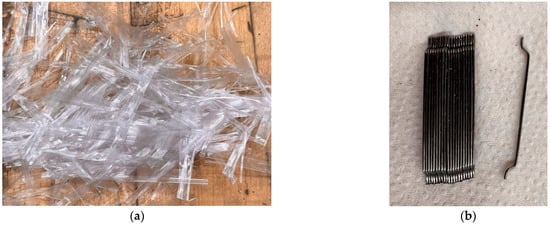
Figure 1
Open AccessArticle
Research on Space Targets Simulation Modulation Algorithm Combined Global–Local Multi-Spectral Radiation Features
by
Yu Zhang, Songzhou Yang, Zhipeng Wei, Jian Zhang, Bin Zhao, Dianwu Ren, Jingrui Sun, Lu Wang, Taiyang Ren, Dongpeng Yang and Guoyu Zhang
Sensors 2025, 25(9), 2702; https://doi.org/10.3390/s25092702 - 24 Apr 2025
Abstract
To solve the international problem of global–local radiation features simulation of multi-spectral space targets, this paper proposes a multi-spectral space target simulation modulation algorithm that can combine global–local spectral radiation features. An overall architecture of a series-parallel multi-source information fusion space target simulation
[...] Read more.
To solve the international problem of global–local radiation features simulation of multi-spectral space targets, this paper proposes a multi-spectral space target simulation modulation algorithm that can combine global–local spectral radiation features. An overall architecture of a series-parallel multi-source information fusion space target simulation system (MITS) is constructed, and a global–local multi-spectral radiation feature modulation link is built. A multi-spectral feature modulation algorithm consisting of three modules, including optical engine non-uniformity compensation, global spectral radiant energy modulation, and local radiant grayscale modulation, is designed, and an experimental platform is built to verify the correctness and advancement of the proposed algorithm. The results indicate that the non-uniformity is better than 3.78%, the global simulation error is better than −4.56%, and the local simulation error is better than 4.25%. It is one of the few multi-spectral target simulation modulation algorithms worldwide that can combine the global whole and local details. It supports the performance test and technology iteration of multi-spectral optical loads. It helps to supplement the theoretical system of multi-spectral space target simulation and enhance the ground-based semi-physical simulation link of optical loads.
Full article
(This article belongs to the Special Issue Advances in Optical Sensing, Instrumentation and Systems: 2nd Edition)
►▼
Show Figures
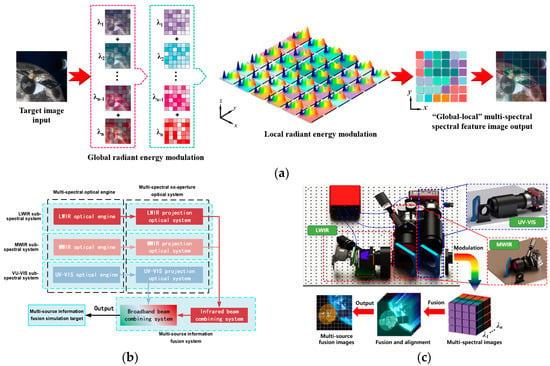
Figure 1
Open AccessArticle
A Monocular Camera as an Operation Logger for Motorized Mobility Scooters: Visual Odometry Method to Estimate Steering and Throttle Angles
by
Naoto Haraguchi, Yi Liu, Haruki Sugiyama, Kazunori Hase and Jun Suzurikawa
Sensors 2025, 25(9), 2701; https://doi.org/10.3390/s25092701 - 24 Apr 2025
Abstract
Motorized mobility scooters (MMSs) are vital assistive technology devices that facilitate independent living for older adults. In many cases, older adults with physical impairments operate MMSs without special licenses, increasing the risk of accidents caused by operational errors. Although sensing systems have been
[...] Read more.
Motorized mobility scooters (MMSs) are vital assistive technology devices that facilitate independent living for older adults. In many cases, older adults with physical impairments operate MMSs without special licenses, increasing the risk of accidents caused by operational errors. Although sensing systems have been developed to record MMS operations and evaluate driving skills, they face challenges in clinical applications because of the complexity of installing inertial measurement units (IMUs). This study proposes a novel recording system for MMS operation that uses a compact single-lens camera and image processing. The system estimates steering and throttle angles during MMS operation using optical flow and template matching approaches. Estimation relies on road surface images captured by a single monocular camera, significantly reducing the complexity of the sensor setup. The proposed system successfully estimated the steering angle with comparable accuracy to existing approaches using IMUs. Estimation of the throttle angle was negatively affected by the inertia of the MMS body during acceleration and deceleration but demonstrated high accuracy during stable driving conditions. This method provides a fundamental computational technique for measuring MMS operations using camera images. With its simple setup, the proposed system enhances the usability of recording systems for evaluating MMS driving skills.
Full article
(This article belongs to the Special Issue Sensors and Wearables for Rehabilitation)
Open AccessArticle
A Soft Capacitive Pressure Sensor Based on a Liquid Dielectric Layer
by
Meng Zhang, Chengjie Qiu, Jianxiang Wang, Xuan Huang, Wu Zhang, Lip-Ket Chin and Wenli Shang
Sensors 2025, 25(9), 2700; https://doi.org/10.3390/s25092700 - 24 Apr 2025
Abstract
Soft electronic technology has broad application prospects in biomedical and wearable devices, among others, due to its flexibility, lightweight nature, and biocompatibility. Although various materials and structures have been proposed for pressure sensors based on soft electronic technology, most studies focus on a
[...] Read more.
Soft electronic technology has broad application prospects in biomedical and wearable devices, among others, due to its flexibility, lightweight nature, and biocompatibility. Although various materials and structures have been proposed for pressure sensors based on soft electronic technology, most studies focus on a specific function with fixed sensitivity, lacking tunability to expand the operational range. In this work, we demonstrated a low-cost polydimethylsiloxane (PDMS)-based pressure sensor that can be easily fabricated by laser ablation and mature PDMS fabrication technology. We then employed a liquid solution to serve as the dielectric layer of the pressure sensor. By injecting different liquid solutions, the sensitivity of the capacitive pressure sensor can be easily adjusted. A 2.73-fold increase in sensitivity and excellent sensing linearity with a determination coefficient greater than 0.85 were achieved. The pressure sensor was applied to demonstrate material property measurements and Morse code adaptation. We foresee that the adjustable soft capacitive pressure sensor has extensive applications in wearable devices, material metrology, healthcare point-of-care devices, and other fields.
Full article
(This article belongs to the Section Electronic Sensors)
►▼
Show Figures
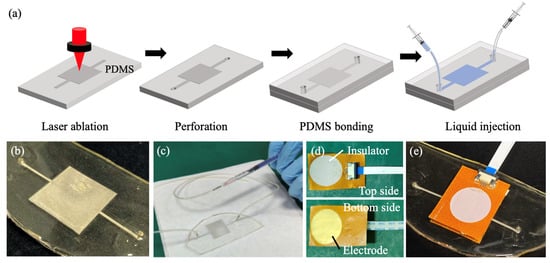
Figure 1
Open AccessArticle
Research and Optimization of White Blood Cell Classification Methods Based on Deep Learning and Fourier Ptychographic Microscopy
by
Mingjing Li, Junshuai Wang, Shu Fang, Le Yang, Xinyang Liu, Haijiao Yun, Xiaoli Wang, Qingyu Du and Ziqing Han
Sensors 2025, 25(9), 2699; https://doi.org/10.3390/s25092699 - 24 Apr 2025
Abstract
White blood cell (WBC) classification plays a crucial role in hematopathology and clinical diagnostics. However, traditional methods are constrained by limited receptive fields and insufficient utilization of contextual information, which hinders classification performance. To address these limitations, this paper proposes an enhanced WBC
[...] Read more.
White blood cell (WBC) classification plays a crucial role in hematopathology and clinical diagnostics. However, traditional methods are constrained by limited receptive fields and insufficient utilization of contextual information, which hinders classification performance. To address these limitations, this paper proposes an enhanced WBC classification algorithm, CCE-YOLOv7, which is built upon the YOLOv7 framework. The proposed method introduces four key innovations to enhance detection accuracy and model efficiency: (1) A novel Conv2Former (Convolutional Transformer) backbone was designed to combine the local pattern extraction capability of convolutional neural networks (CNNs) with the global contextual reasoning of transformers, thereby improving the expressiveness of feature representation. (2) The CARAFE (Content-Aware ReAssembly of Features) upsampling operator was adopted to replace conventional interpolation methods, thereby enhancing the spatial resolution and semantic richness of feature maps. (3) An Efficient Multi-scale Attention (EMA) module was introduced to refine multi-scale feature fusion, enabling the model to better focus on spatially relevant features critical for WBC classification. (4) Soft-NMS (Soft Non-Maximum Suppression) was used instead of traditional NMS to better preserve true positives in densely packed or overlapping cell scenarios, thereby reducing false positives and false negatives. Experimental validation was conducted on a WBC image dataset acquired using the Fourier ptychographic microscopy (FPM) system. The proposed CCE-YOLOv7 achieved a detection accuracy of 89.3%, showing a 7.8% improvement over the baseline YOLOv7. Furthermore, CCE-YOLOv7 reduced the number of parameters by 2 million and lowered computational complexity by 5.7 GFLOPs, offering an efficient and lightweight model suitable for real-time clinical applications. To further evaluate model effectiveness, comparative experiments were conducted with YOLOv8 and YOLOv11. CCE-YOLOv7 achieved a 4.1% higher detection accuracy than YOLOv8 while reducing computational cost by 2.4 GFLOPs. Compared with the more advanced YOLOv11, CCE-YOLOv7 maintained competitive accuracy (only 0.6% lower) while using significantly fewer parameters and 4.3 GFLOPs less in computation, highlighting its superior trade-off between accuracy and efficiency. These results demonstrate that CCE-YOLOv7 provides a robust, accurate, and computationally efficient solution for automated WBC classification, with significant clinical applicability.
Full article
(This article belongs to the Section Biomedical Sensors)
Open AccessArticle
Smartphone-Based Deep Learning System for Detecting Ractopamine-Fed Pork Using Visual Classification Techniques
by
Hong-Dar Lin, Mao-Quan He and Chou-Hsien Lin
Sensors 2025, 25(9), 2698; https://doi.org/10.3390/s25092698 - 24 Apr 2025
Abstract
Ractopamine, a beta-agonist used to enhance lean meat yield, poses health risks with excessive consumption. To comply with global trade policies, Taiwan permits imports of North American (USA. and Canadian) pork containing ractopamine, raising concerns over unclear labeling and potential misidentification as Taiwan
[...] Read more.
Ractopamine, a beta-agonist used to enhance lean meat yield, poses health risks with excessive consumption. To comply with global trade policies, Taiwan permits imports of North American (USA. and Canadian) pork containing ractopamine, raising concerns over unclear labeling and potential misidentification as Taiwan pork. Given the high demand for pork, consumers need a reliable way to verify meat authenticity. To address this issue, this study proposes a smartphone-based visual detection system for meat cut and pork origin classification, extending to ractopamine detection. Consumers can use mobile devices in retail settings to analyze pork images and make informed decisions. The system employs a three-stage process: first, applying a black elliptical mask to extract the outer ROI (region of interest) for meat cut classification; then, using a black square mask to obtain the inner ROI for pork origin classification; and finally, determining ractopamine presence in North American pork. Experimental results demonstrate MobileNet’s superior accuracy and efficiency, achieving a 96% CR (classification rate) for meat cut classification, a 79.11% average CR and 90.25% F1 score for pork origin classification, and an 80.67% average CR and 80.56% F1 score for ractopamine detection. These findings confirm the system’s effectiveness in enhancing meat authenticity verification and market transparency.
Full article
(This article belongs to the Special Issue Innovative Sensors and Embedded Sensor Systems for Food Analysis)
Open AccessArticle
FARVNet: A Fast and Accurate Range-View-Based Method for Semantic Segmentation of Point Clouds
by
Chuang Chen, Lulu Zhao, Wenwu Guo, Xia Yuan, Shihan Tan, Jing Hu, Zhenyuan Yang, Shengjie Wang and Wenyi Ge
Sensors 2025, 25(9), 2697; https://doi.org/10.3390/s25092697 (registering DOI) - 24 Apr 2025
Abstract
Environmental perception systems provide foundational geospatial intelligence for precision mapping applications. Light Detection and Ranging (LiDAR) provides critical 3D point cloud data for environmental perception systems, yet efficiently processing unstructured point clouds while extracting semantically meaningful information remains a persistent challenge. This paper
[...] Read more.
Environmental perception systems provide foundational geospatial intelligence for precision mapping applications. Light Detection and Ranging (LiDAR) provides critical 3D point cloud data for environmental perception systems, yet efficiently processing unstructured point clouds while extracting semantically meaningful information remains a persistent challenge. This paper presents FARVNet, a novel real-time Range-View (RV)-based semantic segmentation framework that explicitly models the intrinsic correlation between intensity features and spatial coordinates to enhance feature representation in point cloud analysis. Our architecture introduces three key innovations: First, the Geometric Field of View Reconstruction (GFVR) module rectifies spatial distortions and compensates for structural degradation induced during the spherical projection of 3D LiDAR point clouds onto 2D range images. Second, the Intensity Reconstruction (IR) module is employed to update the “Intensity Vanishing State” for zero-intensity points, including those from LiDAR acquisition limitations, thus enhancing the learning ability and robustness of the network. Third, the Adaptive Multi-Scale Feature Fusion (AMSFF) is applied to balance high-frequency and low-frequency features, augmenting the model expressiveness and generalization ability. Experimental evaluations demonstrate that FARVNet achieves state-of-the-art performance in single-sensor real-time segmentation tasks while maintaining computational efficiency suitable for environmental perception systems. Our method ensures high performance while balancing real-time capability, making it highly promising for LiDAR-based real-time applications.
Full article
(This article belongs to the Section Radar Sensors)
Open AccessArticle
Enhancing Last-Mile Logistics: AI-Driven Fleet Optimization, Mixed Reality, and Large Language Model Assistants for Warehouse Operations
by
Saverio Ieva, Ivano Bilenchi, Filippo Gramegna, Agnese Pinto, Floriano Scioscia, Michele Ruta and Giuseppe Loseto
Sensors 2025, 25(9), 2696; https://doi.org/10.3390/s25092696 - 24 Apr 2025
Abstract
Due to the rapid expansion of e-commerce and urbanization, Last-Mile Delivery (LMD) faces increasing challenges related to cost, timeliness, and sustainability. Artificial intelligence (AI) techniques are widely used to optimize fleet management, while augmented and mixed reality (AR/MR) technologies are being adopted to
[...] Read more.
Due to the rapid expansion of e-commerce and urbanization, Last-Mile Delivery (LMD) faces increasing challenges related to cost, timeliness, and sustainability. Artificial intelligence (AI) techniques are widely used to optimize fleet management, while augmented and mixed reality (AR/MR) technologies are being adopted to enhance warehouse operations. However, existing approaches often treat these aspects in isolation, missing opportunities for optimization and operational efficiency gains through improved information visibility across different roles in the logistics workforce. This work proposes the adoption of novel technological solutions integrated in an LMD framework that combines AI-based optimization of shipment allocation and vehicle route planning with a knowledge graph (KG)-driven decision support system. Additionally, the paper discusses the exploitation of relevant recent tools, including large language model (LLM)-powered conversational assistants for managers and operators and MR-based headset interfaces supporting warehouse operators by providing real-time data and enabling direct interaction with the system through virtual contextual UI elements. The framework prioritizes the customizability of AI algorithms and real-time information sharing between stakeholders. An experiment with a system prototype in the Apulia region is presented to evaluate the feasibility of the system in a realistic logistics scenario, highlighting its potential to enhance coordination and efficiency in LMD operations. The results suggest the usefulness of the approach while also identifying benefits and challenges in real-world applications.
Full article
(This article belongs to the Special Issue Sensors and Smart City)
Open AccessArticle
Research on the Design of an On-Line Lubrication System for Wire Ropes
by
Fan Zhou, Yuemin Wang and Ruqing Gong
Sensors 2025, 25(9), 2695; https://doi.org/10.3390/s25092695 - 24 Apr 2025
Abstract
This study presents an on-line intelligent lubrication system utilizing specialty grease to address lubricant loss and uneven coating issues in traditional methods. Characterized by scanning electron microscopy (SEM) and Fourier transform infrared spectroscopy (FT-IR), the specialty grease demonstrates superior tribological performance, achieving a
[...] Read more.
This study presents an on-line intelligent lubrication system utilizing specialty grease to address lubricant loss and uneven coating issues in traditional methods. Characterized by scanning electron microscopy (SEM) and Fourier transform infrared spectroscopy (FT-IR), the specialty grease demonstrates superior tribological performance, achieving a 46.7% reduction in the average friction coefficient and 33.3% smaller wear scar diameter under a 392 N load compared to conventional lubricants. The system features an automatic control vehicle design integrating heating, grease supply, lubrication-scraping mechanisms, and a dual closed-loop intelligent control system combining PID-based temperature regulation with machine vision. Experiments identified 50 °C as the optimal heating temperature. Kinematic modeling and grease consumption analysis guided greasing parameters optimization, validated through simulations and practical tests. Evaluated on a 20 m long, 36.5 mm diameter wire rope, the system achieved full coverage within 60 s, forming a uniform lubricant layer of 0.3–1.0 mm thickness (±0.15 mm deviation). It realizes the innovative application of high-adhesion lubricating grease, adaptive process control, and real-time thickness feedback technology, significantly improving the lubrication effect, reducing maintenance costs, and extending the lifespan of the wire rope. This provides intelligent lubrication technology support for the reliable operation of wire ropes in industrial fields.
Full article
(This article belongs to the Section Industrial Sensors)
►▼
Show Figures

Figure 1
Open AccessArticle
Spectral Correlation Demodulation Analysis for Fault Diagnosis of Planetary Gearboxes
by
Xiaohui Duan, Rongzhou Lin and Zhipeng Feng
Sensors 2025, 25(9), 2694; https://doi.org/10.3390/s25092694 - 24 Apr 2025
Abstract
Planetary gearbox vibrations exhibit complex amplitude modulation (AM) and frequency modulation (FM) characteristics. The spectral correlation (SC) can reveal the cyclostationarity of rotating machinery signals, but previous studies have modeled gearbox signals as impulse response signals rather than AM–FM signals. This paper presents
[...] Read more.
Planetary gearbox vibrations exhibit complex amplitude modulation (AM) and frequency modulation (FM) characteristics. The spectral correlation (SC) can reveal the cyclostationarity of rotating machinery signals, but previous studies have modeled gearbox signals as impulse response signals rather than AM–FM signals. This paper presents a fault diagnosis method for planetary gearboxes via SC based on the AM–FM model. Firstly, the theoretical expression for the spectral correlation characteristics of AM-FM signals is derived, showing that their demodulation features consist of discrete and grouped points rather than continuous vertical lines, and demonstrating the capability of SC to reveal the cyclostationarity of AM–FM signals. Then, the theoretical SC characteristics of planetary gearbox vibration signals under gear localized fault conditions are derived in closed form, providing theoretical guidance for fault diagnosis. The theoretical derivations are validated experimentally, and the localized faults on the ring, sun, and planet gears are successfully diagnosed.
Full article
(This article belongs to the Section Fault Diagnosis & Sensors)
►▼
Show Figures
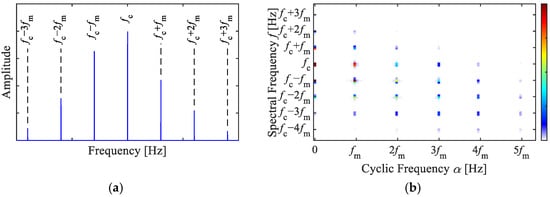
Figure 1
Open AccessArticle
A Novel Grouting Diffusion Monitoring System Based on ZigBee Wireless Sensor Network
by
Xiangpeng Wang, Tingkai Wang, Jinyu Gao, Meng Yang, Fanqiang Lin and Yong Jia
Sensors 2025, 25(9), 2693; https://doi.org/10.3390/s25092693 - 24 Apr 2025
Abstract
Grouting technology is widely used in construction and civil engineering, where evaluating grouting effectiveness is crucial due to the uncertainty of subsurface conditions. Existing methods face drawbacks such as destructiveness, high cost, poor durability, and limited data collection. To address these issues, this
[...] Read more.
Grouting technology is widely used in construction and civil engineering, where evaluating grouting effectiveness is crucial due to the uncertainty of subsurface conditions. Existing methods face drawbacks such as destructiveness, high cost, poor durability, and limited data collection. To address these issues, this paper proposes a novel wireless real-time monitoring system based on a ZigBee sensor network framework. The sensor system integrates a direct current method in geophysics with apparent resistivity measurement to assess grouting effectiveness in real time. It consists of multichannel data acquisition units with electrodes for sensing underground currents and a user control unit for centralized management and data processing. A system acquisition performance test confirmed that the differential input channel’s equivalent input noise of the ADC was only 175 μV and 188 μV, and the average error of the captured sine wave data was 4.51 mV and 4.19 mV, ensuring the voltage measurement accuracy of the data acquisition units. Stability testing of the equipment in road and construction environments showed an average RSD of 2.86% and 2.92%, respectively, indicating good stability of the measurements. ZigBee network performance tests in three simulated environments and a field test showed that the packet loss rate (PLR) was less than 2% from 0 to 50 m, ensuring network communication in grouting project scenarios. On-site experiments demonstrate that the system can simultaneously monitor multiple profiles and perform inversions in the grouting area, which can be assembled into 3D inversion images for evaluating grout diffusion, offering valuable insights for optimizing construction operations, and enhancing grouting efficiency.
Full article
(This article belongs to the Topic Advances in Non-Destructive Testing Methods, 3rd Edition)
►▼
Show Figures

Figure 1
Open AccessSystematic Review
A Comparative Study on the Integration of Eye-Tracking in Recommender Systems
by
Osamah M. Al-Omair
Sensors 2025, 25(9), 2692; https://doi.org/10.3390/s25092692 - 24 Apr 2025
Abstract
This study investigated the integration of eye tracking technologies in recommender systems, focusing on their potential to enhance personalization, accuracy, and user engagement. Eye tracking metrics, including fixation duration and gaze patterns, provide a non-intrusive means of capturing real-time user preferences, which can
[...] Read more.
This study investigated the integration of eye tracking technologies in recommender systems, focusing on their potential to enhance personalization, accuracy, and user engagement. Eye tracking metrics, including fixation duration and gaze patterns, provide a non-intrusive means of capturing real-time user preferences, which can lead to more effective recommendations. Through a comprehensive comparison of current studies, this paper synthesizes findings on the impact of eye tracking across application domains such as e-commerce and media. The results indicate notable improvements in recommendation accuracy with the use of gaze-based feedback. However, limitations persist, including reliance on controlled environments, limited sample diversity, and the high cost of specialized eye tracking equipment. To address these challenges, this paper proposes a structured framework that systematically integrates eye tracking data into real-time recommendation generation. The framework consists of an Eye Tracking Module, a Preferences Module, and a Recommender Module, creating an adaptive recommendation process that continuously refines user preferences based on implicit gaze-based interactions. This novel approach enhances the adaptability of recommender systems by minimizing reliance on static user profiles. Future research directions include the integration of additional behavioral indicators and the development of accessible eye tracking tools to broaden real-world impact. Eye tracking shows substantial promise in advancing recommender systems but requires further refinement to achieve practical, scalable applications across diverse contexts.
Full article
(This article belongs to the Special Issue Multi-Modal Data Sensing and Processing)
►▼
Show Figures
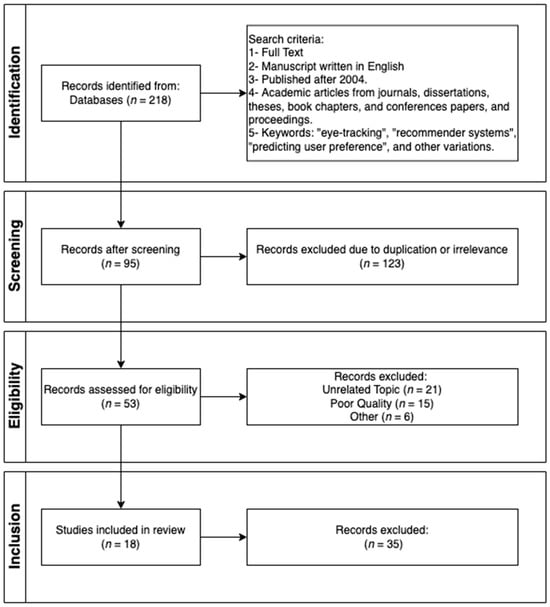
Figure 1
Open AccessArticle
Trinocular Vision-Driven Robotic Fertilization: Enhanced YOLOv8n for Precision Mulberry Growth Synchronization
by
Ma Ming, Osama Elsherbiny and Jianmin Gao
Sensors 2025, 25(9), 2691; https://doi.org/10.3390/s25092691 - 24 Apr 2025
Abstract
This study focused on addressing the issue of delayed root system development in mulberry trees during aerosol cultivation, which is attributed to the asynchronous growth of branches and buds. To tackle this challenge, we propose an intelligent foliar fertilizer spraying system based on
[...] Read more.
This study focused on addressing the issue of delayed root system development in mulberry trees during aerosol cultivation, which is attributed to the asynchronous growth of branches and buds. To tackle this challenge, we propose an intelligent foliar fertilizer spraying system based on deep learning. The system incorporates a parallel robotic arm spraying device and employs trinocular vision to capture image datasets of mulberry tree branches. After comparing YOLOv8n with other YOLO versions, we made several enhancements to the YOLOv8n model. These improvements included the introduction of the Asymptotic Feature Pyramid Network (AFPN), the optimization of feature extraction using the MSBlock module, the adoption of a dynamic ATSS label assignment strategy, and the replacement of the CIoU loss function with the Focal_XIoU loss function. Furthermore, an artificial neural network was utilized to calculate the coordinates of the robotic arm. The experimental results demonstrate that the enhanced YOLOv8n model achieved an average precision of 94.48%, representing a 6.05% improvement over the original model. Additionally, the prediction error for the robotic arm coordinates was maintained at ≤1.3%. This system effectively enables the precise location and directional fertilization of mulberry branches exhibiting lagging growth, thereby significantly promoting the synchronous development of mulberry seedlings.
Full article
(This article belongs to the Section Sensors and Robotics)
►▼
Show Figures

Figure 1

Journal Menu
► ▼ Journal Menu-
- Sensors Home
- Aims & Scope
- Editorial Board
- Reviewer Board
- Topical Advisory Panel
- Instructions for Authors
- Special Issues
- Topics
- Sections & Collections
- Article Processing Charge
- Indexing & Archiving
- Editor’s Choice Articles
- Most Cited & Viewed
- Journal Statistics
- Journal History
- Journal Awards
- Society Collaborations
- Conferences
- Editorial Office
Journal Browser
► ▼ Journal Browser-
arrow_forward_ios
Forthcoming issue
arrow_forward_ios Current issue - Vol. 25 (2025)
- Vol. 24 (2024)
- Vol. 23 (2023)
- Vol. 22 (2022)
- Vol. 21 (2021)
- Vol. 20 (2020)
- Vol. 19 (2019)
- Vol. 18 (2018)
- Vol. 17 (2017)
- Vol. 16 (2016)
- Vol. 15 (2015)
- Vol. 14 (2014)
- Vol. 13 (2013)
- Vol. 12 (2012)
- Vol. 11 (2011)
- Vol. 10 (2010)
- Vol. 9 (2009)
- Vol. 8 (2008)
- Vol. 7 (2007)
- Vol. 6 (2006)
- Vol. 5 (2005)
- Vol. 4 (2004)
- Vol. 3 (2003)
- Vol. 2 (2002)
- Vol. 1 (2001)
Highly Accessed Articles
Latest Books
E-Mail Alert
News
Topics
Topic in
Applied Sciences, Electronics, Energies, Sci, Sensors, Systems
Technologies and Applications of Data-Driven Anomaly Detection in Energy Systems
Topic Editors: Marco Savino Piscitelli, Alfonso Capozzoli, Antonio Rosato, Cheng FanDeadline: 30 April 2025
Topic in
Applied Sciences, Electronics, Future Internet, Sensors, Smart Cities
Cloud and Edge Computing for Smart Devices
Topic Editors: Mehdi Sookhak, Francesco MoscatoDeadline: 20 May 2025
Topic in
Energies, Minerals, Safety, Sensors, Sustainability
Mining Safety and Sustainability, 2nd Volume
Topic Editors: Longjun Dong, Ming Xia, Yanlin Zhao, Wenxue ChenDeadline: 30 May 2025
Topic in
Applied Sciences, Optics, Sensors, Materials, Fibers, Photonics, Micromachines
Distributed Optical Fiber Sensors
Topic Editors: Jian Li, Hao Wu, Giancarlo C. Righini, Zhe Ma, Yahui WangDeadline: 15 June 2025

Conferences
Special Issues
Special Issue in
Sensors
Fault Diagnosis and Vibration Signal Processing in Rotor Systems
Guest Editors: Yongfeng Yang, Jin Zhou, Rafael Morales, Alexandre Presas, Saleh MobayenDeadline: 25 April 2025
Special Issue in
Sensors
Sensing Applications and Developments in IoT: Advancements, Challenges, and Future Prospects
Guest Editors: Gianluca Cornetta, Abdellah TouhafiDeadline: 25 April 2025
Special Issue in
Sensors
Integrated Localization and Communication: Advances and Challenges
Guest Editors: Andrej Hrovat, Ke Guan, Yang Miao, Gordana GardasevicDeadline: 25 April 2025
Special Issue in
Sensors
Space Weather—Radiation Damage to Materials and Electronic Devices: Mitigation Risks
Guest Editors: Jose Sanchez del Rio Saez, Antonio Vázquez-LópezDeadline: 25 April 2025
Topical Collections
Topical Collection in
Sensors
Advances in Sensors, Big Data and Machine Learning in Intelligent Animal Farming
Collection Editors: Yongliang Qiao, Lilong Chai, Dongjian He, Daobilige Su
Topical Collection in
Sensors
Intelligent Wireless Networks
Collection Editors: Joanna Kolodziej, Florin Pop, Katarzyna Węgrzyn-Wolska
Topical Collection in
Sensors
Tactile Sensors, Sensing and Systems
Collection Editor: Maurizio Valle
Topical Collection in
Sensors
Medical Image Classification
Collection Editors: Sheryl Berlin Brahnam, Loris Nanni, Rick Brattin











